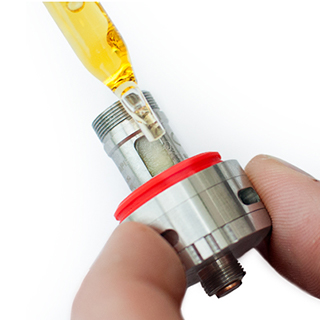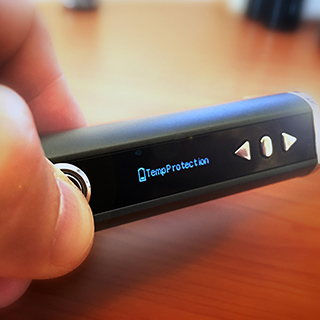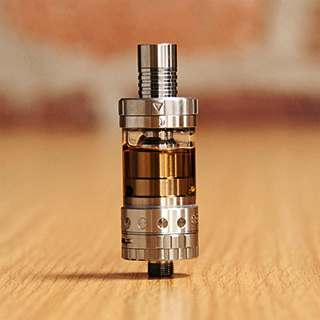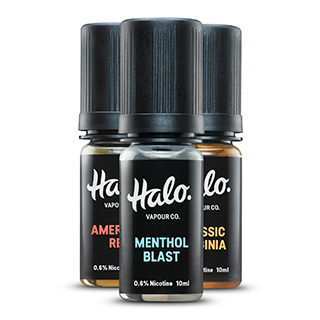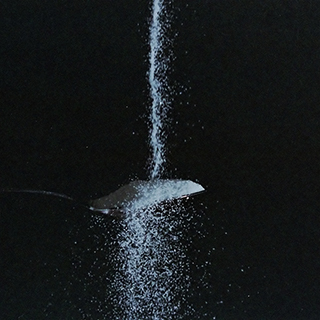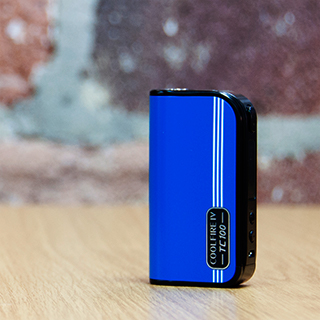
9 Easy Ways To Stop Vape Coils From Burning Fast
Updated by James Dunworth: Jan 2024
Here’s a quick review of this new vape juice I tried. It’s called “Mèche Brûlée.”
On the nose, you’re struck with the delicate flavour of a smouldering stack of old newspapers, and it’s accompanied by the inimitable sensation of somebody sandpapering the inside of your nostrils until the heat from the friction almost starts to burn.
The feeling on inhale is akin to somebody raking the back of your throat with a hot cheese grater, and the taste filling your mouth conjures up images of those choking, noxious knockout gases you always see in the 60’s Batman series. You know, the ones that are faintly purple and cause the dynamic duo to clutch their throats and fall to the ground, gasping for air.
Wait a minute, “Mèche Brûlée” isn’t an vape juice at all; it’s just a clumsy, Google-led translation of “burnt wick” in French. And yes, that’s exactly the taste you get from a burnt vape coil, or more specifically, a burnt wick. As if the horrendous taste wasn’t enough, it also ruins the whole coil head and costs you money.
While it’s true that coils aren’t built to last forever, if your coils are burning fast, you’ve got a problem somewhere. Fortunately, with a little know-how, it’s easy to extend the life of your coils - and ensure better flavour and less cost.
Contents
- How do you know if your coil is burnt?
- Why is my coil burning fast?
- 9 ways to stop coils from burning quickly
- Saving your money and your taste buds
How do you know if your coil is burnt?
If your coil is completely burnt out, you will know about it - the taste of Meche Brûlée is truly unmistakable!
If your coil is only slightly burnt, you may get a faintly burnt taste, as if something's not quite right. Given that we know that burnt coils can produce harmful chemicals, you should probably still change it.
Occasionally, you'll still get a burnt taste when you have just replaced a burnt-out coil. Sometimes this will disappear after a few puffs, but at other times you may need to replace the e-liquid.
Why is my coil burning fast?
All vape coils burn eventually. However, if a coil burns out fast, it’s usually for one simple reason - the coil is not saturated with e-liquid. We’ll explore this in more detail in this section.
First, though, it’s worth checking that you have realistic expectations. All coils deteriorate eventually. If you are using a low-resistance coil at high wattages, your coil may only last 2-3 days. If you’re using a higher-resistance coil at low wattages, it could last as long as two weeks.
However, if your coil is burning out after a day or so, it’s well worth learning why this happens in the first place as this underpins all the advice given in this post.
First, think about when you’re vaping and not getting a burnt taste. When you hit the fire button, electricity flows through your coil and it gets hot. The heat given off by the coil is taken up by the e-liquid, which is soaked into the wick, and it turns the juice into vapour. Because you have the juice there to take up some of the heat energy given off by the coil, the temperature of the coil doesn’t get too high.
When the juice in the wick has been vaporised, the wick dries out a little. However, you have a tank full of vape juice surrounding the coil, and this is constantly replacing the juice in the wick. This means that by the time you go to take another puff, the wick is soaked again and everything works as it should.
But what happens when there’s no juice in the wick, or just not enough? Now, when you hit the fire button and the coil heats up, there isn’t much there to take up that additional heat. As a result, the temperature of the coil increases. This leads to two (equally unwanted) things happening:
- The juice remaining in the wick gets “overcooked,” heating up to an excessive degree and causing the PG to break down into formaldehyde. In case this needs clarifying: formaldehyde tastes absolutely gross.
- Without anything to protect it from heat, the wick is directly exposed to the glowing-hot coil. Since it’s made of cotton or a similar material, the wick burns. If the wick was completely dry, it would literally erupt in flames. And yes, burning cotton tastes horrible too.
These two things are the key ingredients in the “Mèche Brûlée” e-liquid described in the introduction. Burning cotton with notes of formaldehyde. Disgusting with some extra-disgusting thrown in for good measure.
How can we stop our coils from burning out quickly?
The key thing to ensure is that there’s always juice in the wick when we vape.
This means you shouldn’t “dry burn” your coils, because most wicks are made from cotton and will simply get ruined without juice there to protect them. For ceramic wicks, dry burning is fine, and you can get away with short bursts for silica, but not for cotton.
There’s less of a risk when you have juice in your wick, but you still have to take some steps to protect your coil. When you hit the fire button, you deplete the juice in the wick, and we need to make sure our devices are set up so that the flow of new vape juice can keep up with the rate we’re vaporising it.
That’s the key point for how to stop your coil from burning. But what does this mean from a vaper’s perspective? What do we actually need to do?
9 ways to stop vape coils burning fast
The best ways to stop your coil from burning are:
- Prime your coils
- Stop chain vaping
- Reduce power settings
- Keep your vape tank topped up
- Use a vape juice with more PG
- Try a vape juice with less sweetener
- Use temperature control
- Use smart mode
- Use auto-priming technology
Let's all explore all these in more detail!
1. Prime your coil before vaping
If you don’t “prime” your coils before you start vaping, you can burn your coil before you’ve even gotten any use out of it.
When you first install a new coil, the wick has to go from being completely dry to completely soaked. This takes time, so you usually have to wait five minutes or so between filling up your tank and taking your first puff. For most devices, this is all you have to do - but if you have a high powered device it’s worth going further.
Coil heads tend to have an opening in the top and some ports around the side where the wick is visible. To prime the coil, add a few drops of e-liquid to the opening in the top (around 3 to 5 is enough) and then soak the exposed wick at the ports around the side. This doesn’t take much for each port, but just ensure the parts you can see are saturated.
Alternatively, some vapers take a few puffs on their device without pressing the fire button as a method of priming the coil, which forcefully sucks e-liquid into the wick. Be careful if you try this, though, because if you do it too much it can flood your coil.
Now, your new coil is ready to go. But, as an extra precaution, it’s still better to wait about five minutes after you fill up your tank before you start vaping. This shouldn’t be needed (since you already soaked the wick), but if you don’t prime your coil properly the whole thing can get ruined, so it’s worth being absolutely sure.
2. Stop chain vaping
“Chain vaping” – just vaping and vaping continuously until you can’t see your vape device for all the clouds – can lead to a burnt wick too. The reason for this is the balance mentioned earlier: you need to ensure that your wick can re-saturate with juice before you hit the fire button again.
In normal use, this isn’t a problem, because you’ll stop vaping after a short session and give it time to recover. However, if you’re continuously vaping for a long period of time, eventually your coil wick will dry out. Then, if you vape again you’ll risk burning the wick.
The solution to this is simple: stop vaping for a little while. The biggest sign that you need to stop is diminishing flavour. This is a sign there isn’t much juice in your coil and you’re approaching a burning situation. Your wick needs time to get soaked again, like a “re-priming”. Since the coil will be hot, the simplest thing to do is just stop vaping for 5 to 10 minutes and let your tank do its job.
3. Reduce your power setting
When you vape at a higher wattage, you vaporise more juice with each puff. This is great if you want big clouds, but it can also impact your coils. Since you’re vaping e-liquid at a faster rate, sometimes your wick struggles to soak it up quickly enough to keep up. When it can’t keep up, you can burn your wick. It’s a lot like the issue with chain vaping, except it happens after much fewer puffs.
The solution is to just reduce your power setting. If you notice the flavour dying out, then your coil is probably getting dry and needs time to soak up the juice. You’ll need to have a break (as above) when this happens, but to make it less likely to happen again, just reduce your wattage a little bit.
Ordinarily, there will be some indication of the range of wattages you should be using on the coil itself or the packaging, so if you stick to this range you shouldn’t run into issues. It’s best to start at the lower end and work your way up. However, if you’re experiencing flavour loss and your coils are burning at your current setting, decreasing the power is the simplest solution.
4. Keep your vape tank topped up
If the amount of juice in your tank or pod is low, it might not be able to soak into your wicks as well. With many coils, the juice has to be at a certain level to even reach the wicking ports. When less of the juice is in contact with the wick, it doesn’t get soaked up as quickly. When your juice level is really low, this can easily cause problems.
The simplest solution to this is to keep your tank topped up. When the performance starts to get worse and the flavour diminishes, it’s probably time to give up on the juice in the tank and refill. You can empty it out first if you don’t want the flavours to mix. Alternatively, you can often rotate your tank so the liquid does soak the wick. This is less reliable, though, and it gets really hard when your juice level gets too low, so refilling is the best approach.
5. Use a vape juice with more PG
Vape juice contains 2 main ingredients - Propylene Glycol (PG) and Vegetable Glycerine (VG). PG is the thinner liquid of the two - meaning it soaks into wicks more easily. This has important consequences for the balance we need to strike between the speed of wicking and the speed of vaporisation. If your juice doesn’t soak into the wick as quickly, you’re more likely to run into dry puffs and possibly burn your wicks.
This means that juices with a high VG content (70% or higher) can cause problems with wicking and may ruin your coils. So if you’re regularly running into issues with dry puffs and burnt coils, it could be the vape juice you’re using. Try changing your high-VG juice for one with around a 50/50 mix or primarily PG, such as Halo Vapour Co.
This isn’t always a problem, though. Sub-ohm tanks, for example, are often well set up to deal with higher-VG juices. However, if your tank doesn’t have excellent wicking, they could easily cause an issue.
Related: PG vs VG: What’s the difference?
6. Try a vape juice with less sweetener
When an e-liquid has a lot of sweetener added, it can “gunk” up your coils. The sugars in the e-liquid can caramelise, which is delicious if you’re talking about a dessert, but is also a reliable way to destroy your coils. The gunk-filled wick can’t soak up new juice as well, so when you vape you cause the same sort of problems discussed throughout this post.
Although this is often related to sweetener, there are many different juices prone to gunking up coils. Coffee and heavy, dessert-inspired e-liquids are common culprits, but there are others too (discussed in threads here and here). In general, darker-coloured juices are more likely to impact your wicks and coils than clearer juices.
(This is particularly the case with newer bar-salt e-liquids - while delicious, they are harder on the coils. They do work better with some devices and coils, though, particularly the Aspire R1 and the Xros series when used with a 0.6 or 0.8ohm pod.)
If you have a gunked-up coil, you can clean the wicks to attempt to solve the problem, either using water or some strong grain alcohol (or anything clear, strong and drinkable – not rubbing alcohol). If you do this, though, you have to leave it for 24 hours (or longer) to completely dry out before you use it again.
Not everyone agrees when it comes to cleaning coils, though. Not only are there different methods, but a lot of the time you still won’t be able to get the coil back in tip-top condition even after a thorough clean. This is especially true if you’ve already tried to vape with the gunked-up coil and damaged the wick in the process.
Really, the easiest solution is to just use a vape juice with less sweetener.. You’ll have to sacrifice the coil that’s already gunked up, but it will help you avoid the issue altogether in future.
7. Use Temperature Control
Temperature control (TC) vaping solves the problems with burning wicks more directly. By tracking the detectable changes in resistance that occur when certain coil materials are heated up, TC devices such as the G Priv 4 and the Smok Morph 3 allow you to set a maximum temperature for your coil.
When it reaches this temperature, the vape device stops delivering power to stop it from getting any hotter.
If there was a “magic bullet” solution to burned wicks and coils, TC is it. When you try to vape from a wick without enough juice in it, the device doesn’t let you. Even if you were actively trying to burn your wicks, you couldn’t do it. This means TC can solve the problem without the need for any of the other tips in this list. The only problem is that you need a compatible vape device and a tank that supports nickel, titanium or stainless steel coils.

8. Use Smart Mode
Smart Mode didn't exist when we first wrote this post, but it's a major leap forward in vape technology.
Smart mode works in different ways depending on the device you use. All devices using smart mode detect the coil you are using, and they will either:
- Set a minimum and maximum wattage.
- Set your power automatically to the best wattage for the coil.
- Recommend the best wattage for your coil.
If you stick to Smart Mode, you will avoid using too high a wattage and reduce the chances of burning your coil.
Some of my favourite devices that use Smart Mode are the popular Voopoo Drag Series.
9. Use auto-priming technology
The next leap forward in technology is now hitting the shelves.
The Innokin Sensis introduces auto-priming. The device draws in new vape juice at the end of every puff to ensure the wick does not dry out. It does this by continuing a low power output for a short time after you have finished inhaling.
A pleasant side effect is that the flavour should be improved too. I hope to see many more devices incorporating this technology in the future!
Can you rescue a burnt coil?
Yes, but only sometimes! I find it is also more feasible if you are using a high-resistance MTL coil than if you are using a sub-ohm coil.
If you don’t have much e-liquid and you take a puff, you can sometimes detect the start of burning. Immediately stop vaping, and fill your tank with e-liquid. Allow it some time to saturate the wick before taking another puff.
You may rescue the coil, but you should change the coil as soon as you can get another one, as even if it tastes okay you really don’t want to inhale any burnt cotton residue.
Saving your money and your tastebuds
Although it seems like a lot of things to keep track of, this is definitely an area where it’s worth going to some effort to protect your coils. Every burnt coil and wick is money wasted because there is no going back: you have to use a new one. This is especially true if you forget to prime a brand new coil and ruin it.. Plus, it tastes so disgusting it will probably mentally scar you for life.
So if you want to enjoy your juice, get the most out of your coils and avoid the taste of burning wick, keep these tips in mind when you’re vaping.
Related guides
A Beginner’s Guide to Vape Coils
Common Vape Tank Mistakes
16 Common Vape Device Problems & How to Fix Them
